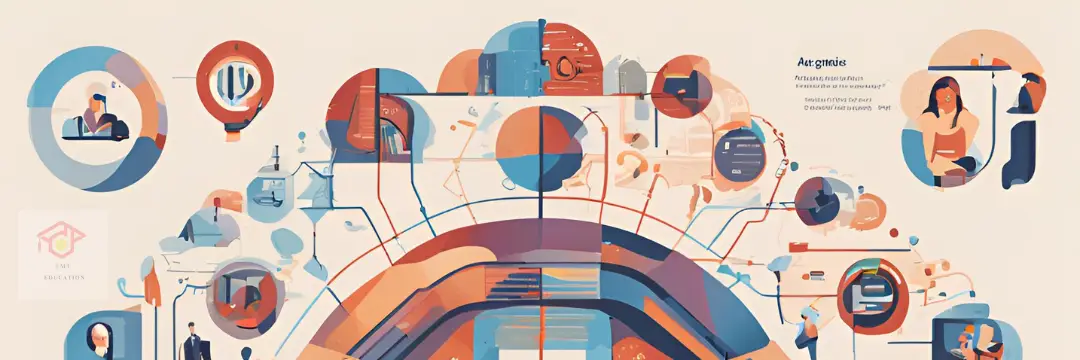
- Cardiovascular System
Structure: The heart pumps blood through a network of blood vessels.
Components: Heart, arteries, veins, capillaries, and blood.
Function: The heart pumps oxygenated blood from the left side through the aorta into the arteries, which carry it to various body tissues. Once oxygen is delivered, blood returns to the heart through the veins and is pumped to the lungs for oxygenation via the right side of the heart. The capillaries, the smallest blood vessels, facilitate the exchange of oxygen, nutrients, and waste between blood and tissues.
- Digestive System
Structure: A continuous tube running from the mouth to the anus, with accessory organs aiding digestion.
Components: Mouth, esophagus, stomach, small and large intestines, liver, pancreas, and gallbladder.
Function: Digestion begins in the mouth, where food is broken down by chewing and saliva. The esophagus moves food to the stomach, where it is further broken down by stomach acid. In the small intestine, nutrients are absorbed with the help of enzymes from the pancreas and bile from the liver. The large intestine absorbs water and forms waste, which is then excreted through the anus.
- Endocrine System
Structure: Glands located throughout the body that release hormones into the bloodstream.
Components: Pituitary gland, thyroid gland, adrenal glands, pancreas, and ovaries/testes.
Function: The endocrine system regulates processes such as growth, metabolism, and reproduction through hormones. The pituitary gland controls many other glands, while the pancreas produces insulin to control blood sugar. The adrenal glands produce hormones that help control stress responses.
- Integumentary System
Structure: The outermost layer of the body that protects internal organs and tissues.
Components: Skin, hair, nails, sweat glands, and oil glands.
Function: The skin acts as a barrier against pathogens, regulates body temperature through sweat, and contains sensory receptors. Hair and nails provide protection and sensory feedback. Oil and sweat glands help to maintain skin moisture and control temperature.
- Lymphatic and Immune System
Structure: A network of vessels and organs that help protect the body against pathogens.
Components: Lymph nodes, lymph vessels, spleen, thymus, and white blood cells.
Function: The lymphatic system transports lymph (a fluid containing infection-fighting white blood cells) through lymph vessels. Lymph nodes filter harmful substances, while the spleen helps remove old red blood cells. The immune system detects and destroys pathogens like bacteria and viruses, defending the body against infections.
- Muscular System
Structure: Muscles attached to bones that control movement.
Components: Skeletal muscles, smooth muscles, and cardiac muscle.
Function: Skeletal muscles work with the skeletal system to move the body. Smooth muscles control involuntary movements in organs like the stomach and intestines. Cardiac muscle in the heart pumps blood throughout the body. Muscles contract and relax to facilitate movement and maintain posture.
- Nervous System
Structure: A network of nerves that transmit signals between the brain and body.
Components: Brain, spinal cord, peripheral nerves.
Function: The nervous system controls voluntary actions (like walking) and involuntary actions (like breathing). The brain processes information and sends signals via the spinal cord and nerves to muscles and organs. The peripheral nerves transmit signals to and from different body parts, ensuring coordination.
- Reproductive System
Structure: Organs responsible for producing offspring.
Components: Males: Testes, penis, seminal vesicles. Females: Ovaries, uterus, fallopian tubes, vagina.
Function: The reproductive system ensures the production of sex cells (sperm in males, eggs in females) and supports fertilization. In females, the uterus nourishes and protects the developing fetus during pregnancy.
- Respiratory System
Structure: A system of airways that brings oxygen into the body and removes carbon dioxide.
Components: Nose, trachea, bronchi, lungs, and diaphragm.
Function: The respiratory system starts with air entering through the nose or mouth, passing through the trachea and bronchi into the lungs. In the lungs, oxygen from the air passes into the blood, and carbon dioxide is expelled during exhalation. The diaphragm, a muscle below the lungs, aids in breathing by expanding and contracting the lungs.
- Skeletal System
Structure: The framework of bones and connective tissues that support the body.
Components: Bones, cartilage, ligaments, and joints.
Function: The skeletal system provides structure, protects internal organs (like the skull protecting the brain), and enables movement by anchoring muscles. Bones also store minerals like calcium and produce blood cells in the bone marrow.
- Urinary System
Structure: A system that filters waste from the blood and excretes it as urine.
Components: Kidneys, ureters, bladder, urethra.
Function: The kidneys filter waste and excess water from the blood, forming urine. The ureters transport urine to the bladder, where it is stored until it is expelled through the urethra. This system helps maintain the body’s fluid balance and removes toxins from the bloodstream.
HUMAN BODY SYSTEM


